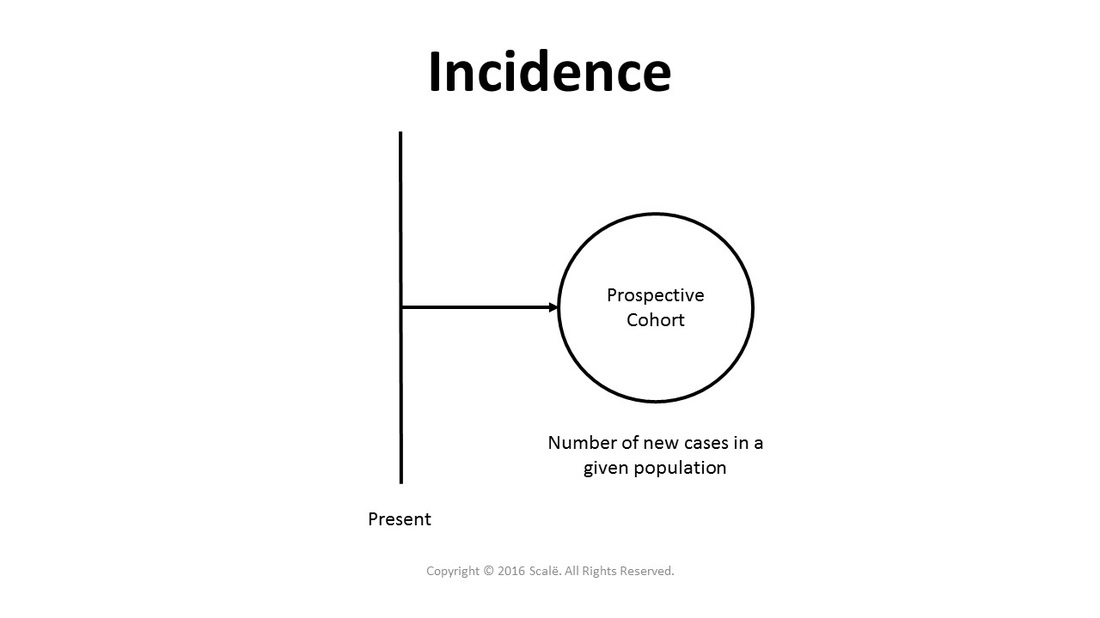Incidence
The number of new cases in a given population
Incidence is defined as the number of new cases in a given population, moving forward in time. Incidence is generated using a prospective cohort design.
Relative risk with 95% confidence interval is used as a measure of association in prospective designs and is closely tied to comparing incidence between sub-groups and sub-populations
Incidence is a much more precise and accurate measure than prevalence. Selection and observation biases associated with retrospective designs lessen the precision and accuracy of measures of prevalence. Incidence uses a prospective method of observation to yield much stronger evidence.
Relative risk with 95% confidence interval is used as a measure of association in prospective designs and is closely tied to comparing incidence between sub-groups and sub-populations
Incidence is a much more precise and accurate measure than prevalence. Selection and observation biases associated with retrospective designs lessen the precision and accuracy of measures of prevalence. Incidence uses a prospective method of observation to yield much stronger evidence.
Click on the Control Event Rate button to continue.
Statistician For Hire
DO YOU NEED TO HIRE A STATISTICIAN?
Eric Heidel, Ph.D. will provide statistical consulting for your research study at $100/hour. Secure checkout is available with PayPal, Stripe, Venmo, and Zelle.
- Statistical Analysis
- Sample Size Calculations
- Diagnostic Testing and Epidemiological Calculations
- Psychometrics

